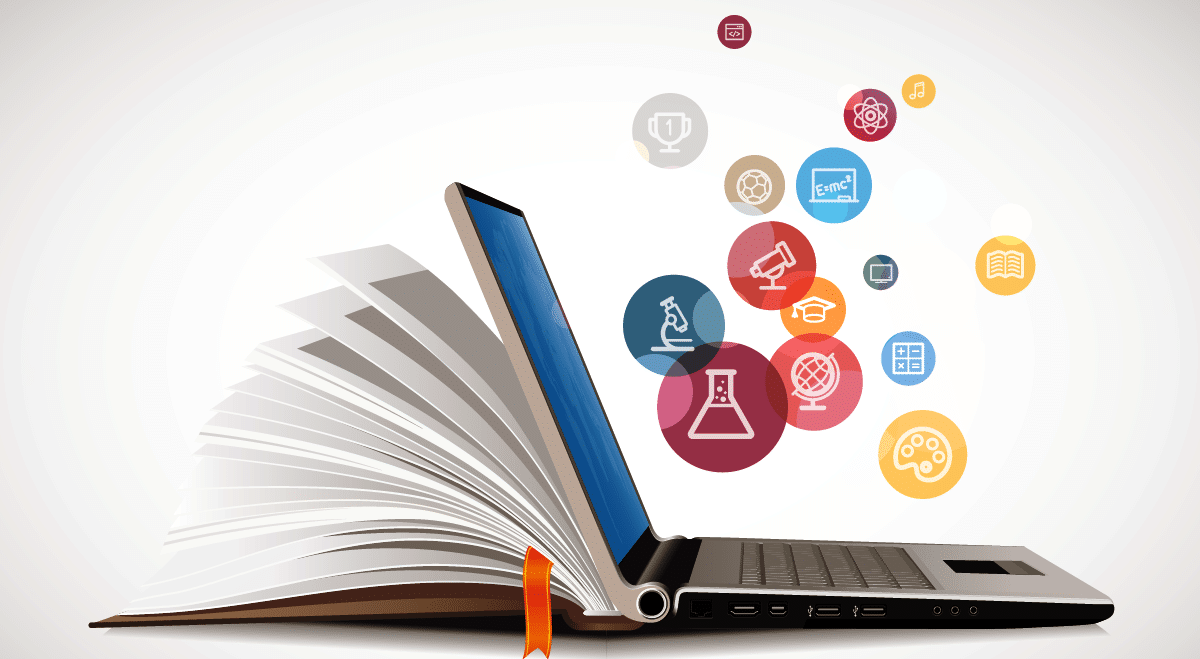Cutting-edge Methods for Enhancing Innovation Education in Today's Understanding Atmospheres
The developing landscape of technology education and learning requires a reevaluation of traditional instructional methods to better furnish trainees for the intricacies of the contemporary world. Cutting-edge techniques, such as hands-on learning experiences and joint project-based initiatives, play an essential duty in connecting academic ideas with sensible applications. Furthermore, the integration of on the internet resources and gamification can improve engagement and inspiration amongst learners. As we discover these approaches, it comes to be critical to think about just how customized understanding can even more improve the educational experience and promote a much deeper connection between pupils and technology. What might this imply for the future of education and learning?
Hands-On Learning Experiences
Hands-on knowing experiences serve as a foundation in innovation education and learning, properly linking the void in between academic expertise and sensible application. These experiential tasks make it possible for pupils to involve straight with devices, software program, and innovation, promoting a deeper understanding of ideas that are typically abstract in standard classroom settings.
By incorporating hands-on learning, educators can promote a setting where pupils can experiment, introduce, and troubleshoot. This method not only cultivates technological abilities however also enhances analytic capacities, as trainees are encouraged to confront real-world obstacles. In addition, hands-on experiences usually bring about boosted trainee motivation and engagement, as students see the instant significance of their research studies to practical circumstances.
Moreover, such experiences can take different kinds, consisting of lab experiments, simulations, and interactive jobs, all of which accommodate different understanding styles. The assimilation of hands-on knowing in modern technology education also promotes retention of details, as trainees are extra likely to bear in mind ideas they have actually actively functioned with as opposed to passively observed. Generally, hands-on experiences are important in preparing pupils for the complexities of the contemporary technical landscape, furnishing them with the abilities and confidence needed to do well in their future careers.
Collective Project-Based Understanding
Collaborative project-based discovering encourages students to collaborate in teams to attend to facility, real-world problems, promoting crucial skills for the contemporary labor force. This strategy encourages active interaction, essential reasoning, and imagination, as trainees discuss duties, share responsibilities, and collectively create remedies. By immersing themselves in jobs that mirror genuine obstacles, students develop a deeper understanding of the subject while refining their capacity to communicate and collaborate successfully.
In modern technology education and learning, collaborative project-based learning can manifest through interdisciplinary jobs that integrate aspects of layout, design, and coding. For example, pupils could collaborate to create a mobile application or style a prototype that deals with a social concern, requiring them to integrate various technological concepts and devices. This experiential learning not just boosts technological efficiency however also grows analytic abilities and versatility.
In addition, such collective endeavors advertise a sense of area among pupils, promoting interpersonal partnerships and a shared dedication to their project end results. As they navigate the complexities of synergy, students learn to appreciate varied perspectives and leverage each other's staminas, preparing them for future specialist environments where cooperation is important. Inevitably, collaborative project-based discovering is a cornerstone of efficient technology education and learning.
Assimilation of Online Resources

The assimilation of on the internet resources promotes access to current info and industry requirements, which is important in a swiftly progressing technological landscape. By leveraging systems such as MOOCs (Massive Open Online Courses) and specialized educational sites, instructors can supplement conventional educational programs with real-world applications, enabling pupils to engage with present fads and methods.

Eventually, the thoughtful integration of on-line resources in technology education and learning promotes a published here more vibrant, appealing, and pertinent discovering experience, gearing up students with the abilities and knowledge essential to prosper in an increasingly electronic world.
Gamification Strategies in Education
The incorporation of gamification methods in education stands for a powerful strategy to even more involve trainees and boost their knowing experiences. By incorporating game-like aspects such as factors, badges, and leaderboards into the educational program, educators can boost motivation and cultivate a sense this page of competitors among students. These methods encourage involvement and persistence, particularly in topics that might otherwise appear discouraging.
Gamification can take various kinds, including interactive quizzes, joint jobs, and immersive simulations, which permit trainees to apply their expertise in useful contexts. This interactive strategy not just makes finding out pleasurable but also enhances essential concepts via repeating and prompt comments. As pupils progress, they can track their success, promoting a development mindset and a feeling of accomplishment.
In addition, gamification helps with distinguished guideline by dealing with varied learning styles and speeds. Students are empowered to take possession of their learning trip, permitting an extra customized instructional experience. In a significantly digital globe, making use of gamification techniques can link the space between standard education and learning and modern-day technical innovations, eventually preparing students for future difficulties.
Personalized Knowing Approaches
Individualized learning methods are increasingly recognized as important for dealing with the diverse needs and choices of pupils in today's academic landscape. These techniques empower learners by customizing academic experiences to private interests, strengths, and finding out speeds, thus enhancing involvement and retention.
In modern technology education, personalized understanding can take numerous types, including flexible knowing technologies, customized curricula, and project-based learning customized to trainee interests. For circumstances, platforms that make use of man-made intelligence can assess a trainee's performance information to recommend details resources or tasks that line up with their learning design.
Additionally, personalized knowing urges student firm, allowing students to establish goals and pick pathways that reverberate with their desires (AI Tools). This freedom promotes a much deeper link to the material, inevitably leading to enhanced end results
Educators play an important duty in this process, employing developmental analyses to monitor development and readjust guideline as necessary. Electronic profiles and collaborative tools can likewise assist in tailored learning, allowing trainees to assess their trips and display their success.
Conclusion
To conclude, improving modern technology education and learning in modern learning environments necessitates the application of ingenious methods that focus on hands-on discovering, joint tasks, and the assimilation of on-line sources. Gamification strategies offer to raise involvement and inspiration, while customized discovering strategies suit private staminas and foster trainee company. Collectively, these strategies create a vibrant instructional experience that prepares trainees for real-world difficulties and cultivates important skills for future success in a swiftly advancing technical landscape.
As we check out these approaches, it becomes crucial to think about exactly how personalized learning can better enhance the academic experience and foster a much deeper connection between pupils and innovation. The integration of hands-on understanding in innovation education additionally advertises retention of information, as students are extra likely to remember principles they have proactively functioned with rather than passively observed.The incorporation of gamification methods in education stands for a powerful approach to better engage pupils and improve their learning experiences. Trainees are empowered to take possession of their learning trip, allowing for a much more personalized academic experience.In conclusion, improving modern technology education and learning in modern knowing settings necessitates the execution of innovative methods that focus on hands-on knowing, joint projects, and the combination of on-line resources.